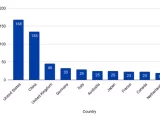
50 Years of Bioinformatics: Shaping the Biology of Tomorrow?
June 4, 2024Bioinformatics has evolved into a mature and thriving research domain, playing a pivotal role in tackling challenges in life sciences. Coined by Paulien Hogeweg and Ben Hesper, the term “bioinformatics” initially emerged as a conceptual framework. Over the span of 50 years, it has grown increasingly relevant. Will bioinformatics eventually assimilate into the broader realm of life sciences, or is it destined to be the cornerstone of future biological endeavors?
The Genesis of Bioinformatics: From Concept to Reality
While many mathematical biologists focused primarily on avian and ecosystem studies, pioneers in bioinformatics like Paulien Hogeweg and Ben Hesper delved into the molecular realm, particularly advancing RNA-folding as a tool for comprehending information processing in biological systems. Hogeweg elaborates on the genesis of bioinformatics in her article “The Roots of Bioinformatics in Theoretical Biology,” highlighting the importance of information processing as a metaphor for understanding living organisms. With the proliferation of protein structure and sequence data, the field evolved and adopted the name “bioinformatics.” Notably, the resurgence of information processing parallels the contemporary influx of data in life sciences.
Exploring the ’90s Frontier
Berend Snel, a bioinformatics professor, recounts his journey into the field: inspired by the documentary “Artificial Life,” he embraced a novel perspective on biology. Snel’s immersion in sequence analysis during his studies heightened his fascination with bioinformatics. He reflects on the pivotal role played by pioneering computational biologists at institutions like the European Molecular Biology Laboratory (EMBL), where he underwent a transformative internship. This era marked the emergence of bioinformatics as an indispensable component of life sciences.
Forging Pathways for Medical Advancement
For Adrien Melquiond, a senior researcher in Computational Structural Bioinformatics, the allure of a data-driven approach led him to explore bioinformatics. His early endeavors involved compiling a database of fetal malformations, laying the groundwork for decision support systems in ultrasonography. Melquiond’s journey underscores the pivotal role of data in reshaping medical practices and advancing structural bioinformatics.
The Genome Sequencing Revolution
According to Snel, the advent of genome sequencing heralded a paradigm shift in bioinformatics. The ability to sequence genomes unlocked revolutionary possibilities in personalized medicine and targeted breeding. Technological advancements in genotyping, transcriptomics, and proteomics, made feasible by genome sequencing, have catalyzed further innovation in bioinformatics. Despite these advancements, Snel muses on the ever-evolving nature of the field, acknowledging the rapid pace of technological obsolescence.
Embracing FAIR Data Principles
Melquiond emphasizes the significance of FAIR (Findable, Accessible, Interoperable, Reusable) data principles in facilitating data sharing and collaboration within the bioinformatics community. He credits Margaret Dayhoff for pioneering systematic data storage and sharing, laying the groundwork for contemporary data-sharing practices.
Navigating the Future of Bioinformatics
The enigmatic realm of metagenomics unveils a vast expanse of uncharted territory, epitomizing the essence of bioinformatics: the quest for the unknown. As technological advancements continue to expand our data repertoire, the future of bioinformatics remains boundless. The convergence of diverse disciplines and creative endeavors promises to usher in new insights and discoveries. Will bioinformatics seamlessly integrate into the fabric of biology, or will it persist as the driving force behind future biological inquiries?


















